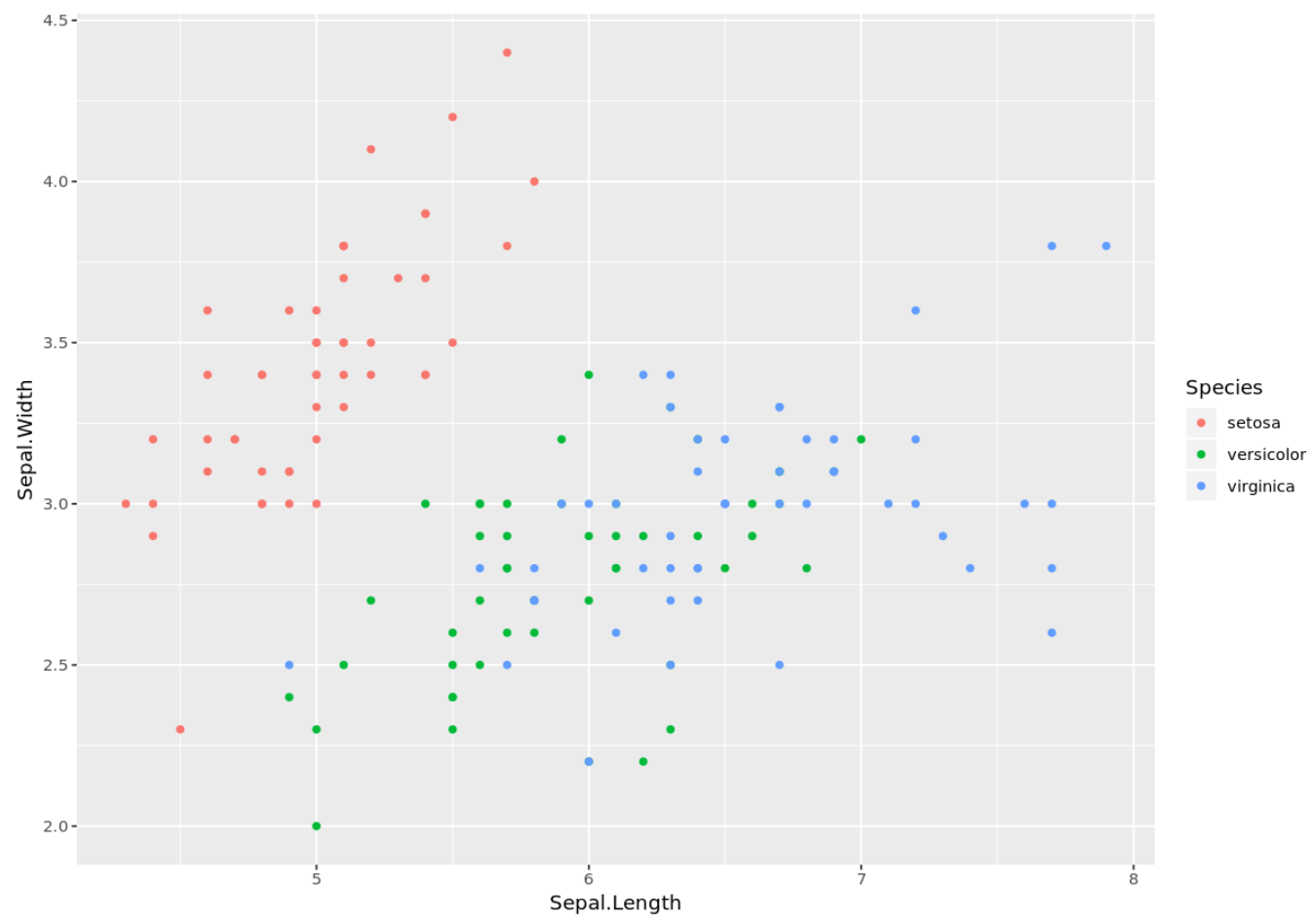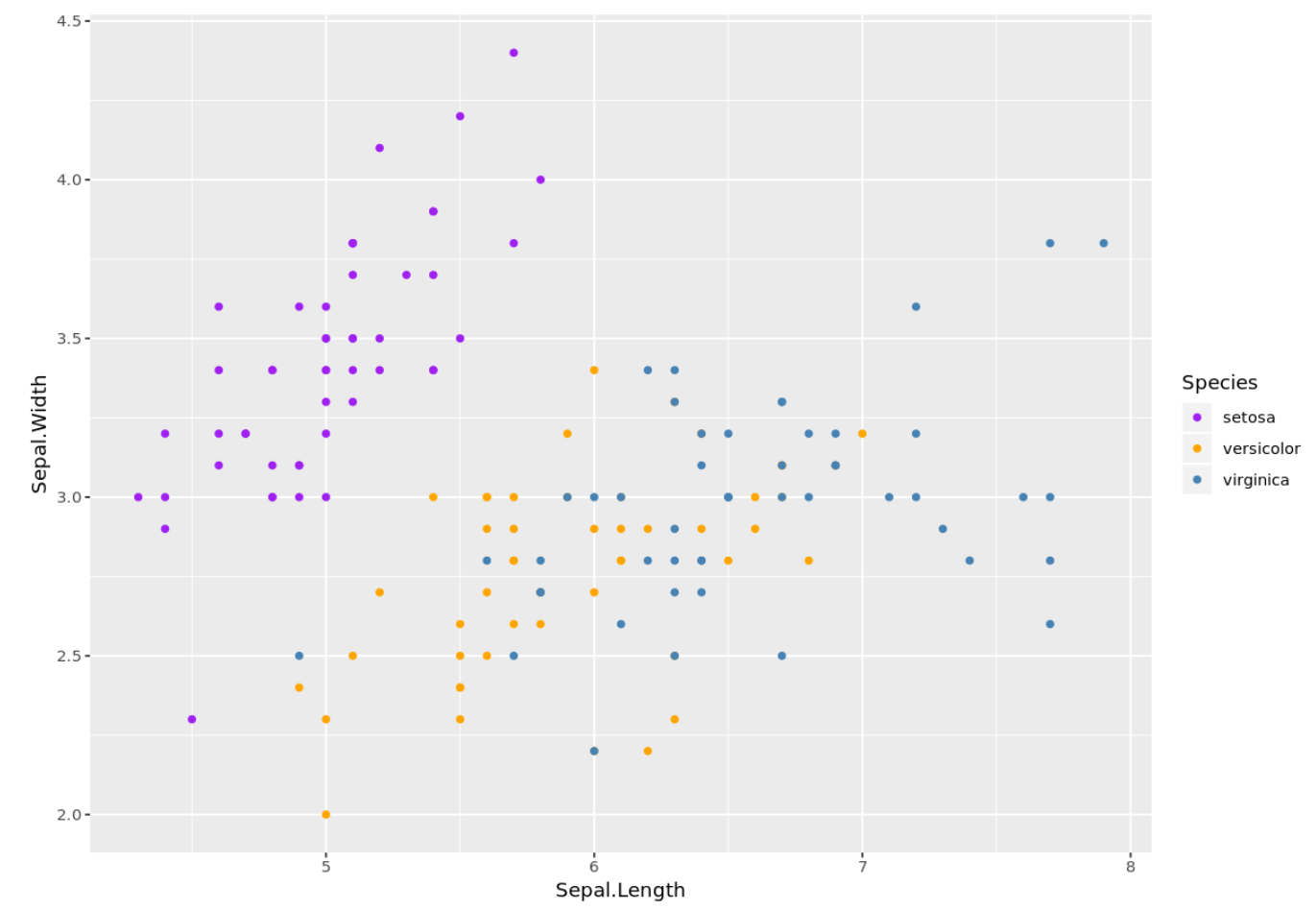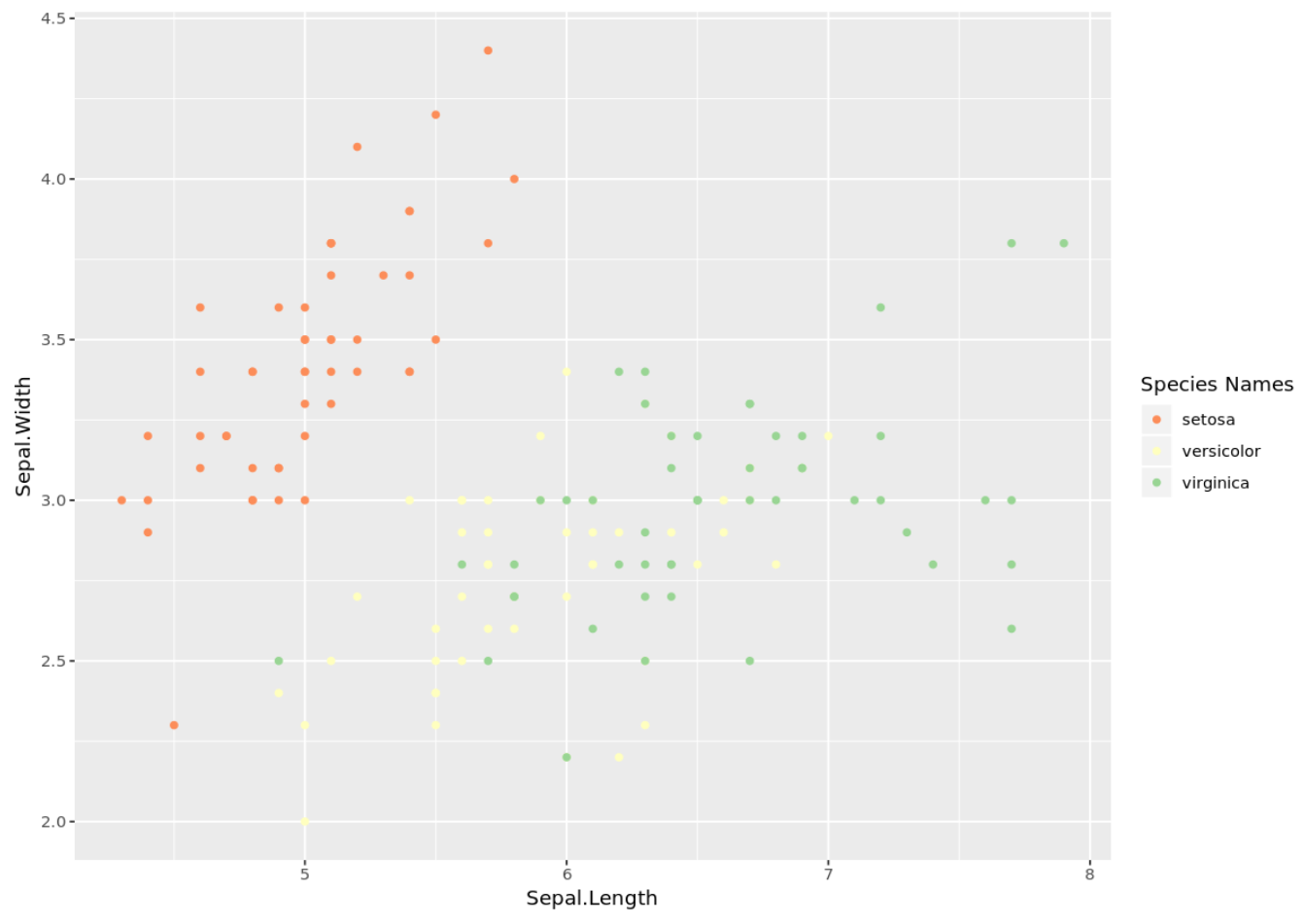วิธีกำหนดสีตามปัจจัยใน ggplot2 (พร้อมตัวอย่าง)
บ่อยครั้งที่คุณอาจต้องการกำหนดสีให้กับจุดในพล็อต ggplot2 ตามตัวแปรหมวดหมู่
โชคดีที่ทำได้ง่ายโดยใช้ไวยากรณ์ต่อไปนี้:
ggplot(df, aes (x=x_variable, y=y_variable, color=color_variable)) +
geom_point()
บทช่วยสอนนี้ให้ตัวอย่างหลายตัวอย่างเกี่ยวกับวิธีใช้ไวยากรณ์นี้ในทางปฏิบัติโดยใช้ชุดข้อมูล R ในตัวที่เรียกว่า iris :
#view first six rows of iris dataset
head(iris)
Sepal.Length Sepal.Width Petal.Length Petal.Width Species
1 5.1 3.5 1.4 0.2 setosa
2 4.9 3.0 1.4 0.2 setosa
3 4.7 3.2 1.3 0.2 setosa
4 4.6 3.1 1.5 0.2 setosa
5 5.0 3.6 1.4 0.2 setosa
6 5.4 3.9 1.7 0.4 setosa
ตัวอย่างที่ 1: ใช้สีเริ่มต้น
รหัสต่อไปนี้แสดงวิธีกำหนดสีเริ่มต้นให้กับจุดในพล็อต ggplot2 ตามตัวแปรแฟคทอเรียล Species :
library (ggplot2) ggplot(iris, aes (x=Sepal.Length, y=Sepal.Width, color=Species)) + geom_point()

เนื่องจากเราไม่ได้ระบุระดับสีหรือรายการสีที่กำหนดเอง ggplot2 จึงกำหนดรายการสีเริ่มต้นสีแดง เขียว และน้ำเงินให้กับจุดต่างๆ
ตัวอย่างที่ 2: ใช้สีที่กำหนดเอง
รหัสต่อไปนี้แสดงวิธีกำหนดสีที่กำหนดเองให้กับจุดในพล็อต ggplot2 โดยใช้ scale_color_manual() :
library (ggplot2) ggplot(iris, aes (x=Sepal.Length, y=Sepal.Width, color=Species)) + geom_point() + scale_color_manual( values = c(" setosa " = " purple ", " versicolor =" orange ", " virginica "=" steelblue "))

โปรดทราบว่าเราสามารถใช้รหัสสีฐานสิบหกเพื่อระบุสีได้
ตัวอย่างที่ 3: ใช้ระดับสีที่กำหนดเอง
รหัสต่อไปนี้แสดงวิธีกำหนดสีที่กำหนดเองให้กับจุดในพล็อต ggplot2 โดยใช้ระดับสีที่กำหนดเองจากแพ็คเกจ RColorBrewer :
library (ggplot2) library (RColorBrewer) #define custom color scale myColors <- brewer. pal (3, " Spectral ") names(myColors) <- levels(iris$Species) custom_colors <- scale_color_manual(name = " Species Names ", values = myColors) ggplot(iris, aes (x=Sepal.Length, y=Sepal.Width, color=Species)) + geom_point() + custom_colors

แหล่งข้อมูลเพิ่มเติม
วิธีสร้างแปลงแบบเคียงข้างกันใน ggplot2
วิธีเปลี่ยนชื่อคำอธิบายใน ggplot2
คู่มือฉบับสมบูรณ์เกี่ยวกับธีม ggplot2 ที่ดีที่สุด